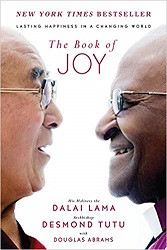Review of Collective Wisdom, edited by Grace Bonney
Lessons, Inspiration, and Advice from Women over 50
edited by Grace Bonney
Artisan, 2021. 399 pages.
Review written July 23, 2022, from a library book
Starred Review
This gorgeous volume of photographs and profiles is a perfect coffee table book to read slowly.
I’ve been reading one profile per day for many months now, and I’m inspired. Yes, in my case I used a library book and simply kept renewing, but this would be a lovely investment to enjoy all over again even after you’ve been through it once, especially since 50 percent of the profits are to be divided among the women featured in the book.
There are 80 profiles in this book, all accompanied by full-page photographic portraits. Most of the profiles are of individual women who are over fifty, but also pairs of intergenerational friends, and some featuring groups of older women who have found community together. The majority of the individual women featured are in their seventies and eighties. These are accomplished women, and there were several writers whose work I knew about and admired. There’s great diversity in the profiles, with I think the majority being BIPOC, and queer and transgender women included as well.
I love rereading the Introduction after having read the whole book, because I think Grace Bonney has succeeded in meeting the goals she expresses there. Here’s a sampling from that:
Since the beginning of time, women have been the keepers of stories, traditions, and wisdom. And for too long, the powerful conversations women have with each other have been overlooked, because society often devalues women, age, and knowledge that is spoken rather than written. Collective Wisdom seeks to rebalance these scales by valuing women who have lived long and complex lives — and the experience and perspective that come with that.
My goal with Collective Wisdom is twofold. I want to gather and share stories and advice that we can all return to, over and over, whenever we need help finding our way. But I also want to remind anyone reading that the most powerful and life-changing tools we all have access to are the connections we form with other women….
In sharing and celebrating the stories and the lessons the women in Collective Wisdom have learned, my hope is that anyone reading will feel uplifted, less alone, inspired to reach out to women who are older or younger than they are right now, and moved to nourish and celebrate the relationships they already have. Your whole world can change when you change whom you listen to. Mine has changed from listening to everyone here.
The editor has met that hope in me with her wonderful book!
Another thing she’s accomplished is that listening to the repeated questions and hearing answers from so many different women, I’m mulling over how I, another woman over fifty, would answer them. Questions like: “What does your current age feel like to you?” “What are you most proud of about yourself?” “What misconceptions about aging would you like to dispel?” “When do you feel your most powerful?” “What role do you feel your ancestors, or the women in your family who came before you, play in your life?” “How has your sense of self-confidence or self-acceptance evolved over time?” “What would you like to learn or experience at this stage in your life?” “Knowing what you know now, what would you go back and tell your younger self?”
There’s so much beauty and wisdom in this book! I love the way the large photographic portraits show that each woman is fabulously beautiful, including those wrinkled with age. This book uplifted, inspired, and encouraged me from start to finish.
Find this review on Sonderbooks at: www.sonderbooks.com/Nonfiction/collective_wisdom.html
Disclosure: I am an Amazon Affiliate, and will earn a small percentage if you order a book on Amazon after clicking through from my site.
Disclaimer: I am a professional librarian, but the views expressed are solely my own, and in no way represent the official views of my employer or of any committee or group of which I am part.
What did you think of this book?









